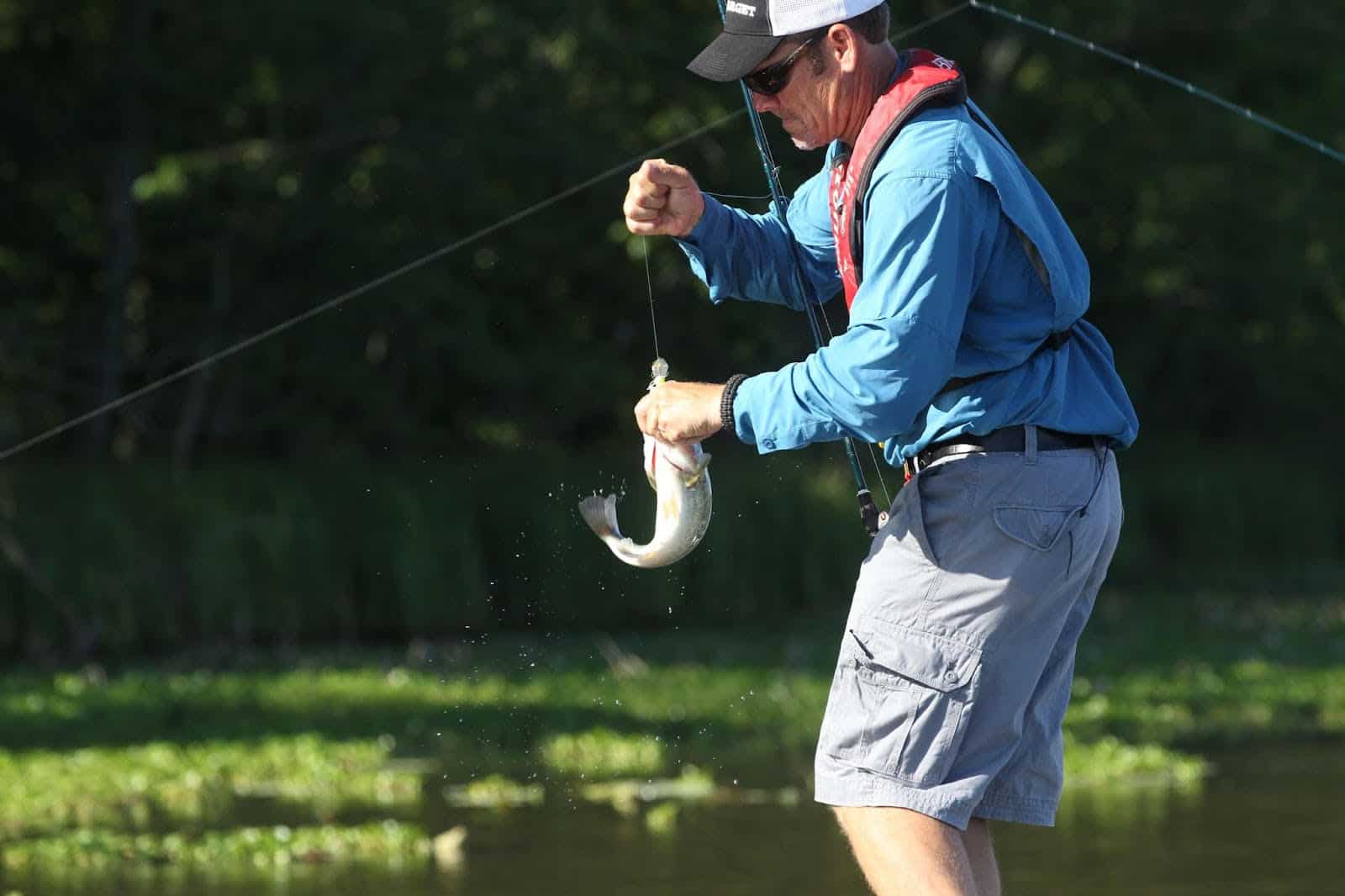Late summer water levels call for increased boating caution
ON 10-08-2024

LITTLE ROCK — For the second year in a row, dry conditions throughout most of The Natural State have led to many lakes and ponds sitting at lower water levels than anglers and boaters experienced throughout spring and early summer. The cooling, lower water of fall can concentrate baitfish and bass, making for great fishing experiences, but it also can create a few hazards for boaters unfamiliar with navigating lakes during this time of year.
According to the Arkansas Water Plan, reservoirs and ponds in Arkansas typically lose up to 46 inches of water level during the year through evaporation, with most of that occurring from July through September. These three months also are some of the driest of the year in Arkansas.
Besides lack of rainfall and increased evaporation, many Arknasas lakes see lower water levels to accommodate the influx of water that typically occurs in late fall. A few lakes also see intentional water level drops in winter to combat aquatic vegetation issues or allow neighboring landowners to fix docks and boathouses.
No matter the reason for the reduction, low water levels bring many unseen hazards closer to the surface. Stumps and rock piles that once sat well out of range are within reach of your boat motor’s lower unit and propeller.

“When water levels are low, it’s really important to slow down a little, especially if you’re not familiar with navigating the lake you’re fishing during this time of year,” Jeremy Risley, Black Bass Program Coordinator for the Arkansas Game and Fish Commission, said. “Stay near the channel, and if you’re in a lake or river that has navigation buoys, stay inside those markers when you have the boat on plane.”
Risley also suggests using your electronics as much as possible, especially if you have topographic maps and a GPS system available.
“You still want to have a depth finder running so you can see exactly how much water you have to run in, but a lot of GPS units will let you plan your route and stay in deeper water without any surprises. Plenty of highland reservoirs have humps and creek turns with steep banks that can put you in only a foot or two of water within a few seconds if you aren’t paying attention to that map and your depth finder.”
Risley also reminds all boaters to wear a properly fitting life jacket when underway, and to always connect your engine’s kill switch to your person when it’s running.
“If you do hit an obstruction, you may be thrown out of the driver’s seat of your boat or out of the boat entirely,” Risley said. “A life jacket will keep you afloat, even if you’re unconscious, and the kill switch will ensure that your boat doesn’t take off to become a danger to you or others.”

It’s always a good idea to have your life jacket on, even if the boat isn’t under power. This is especially true in fall as water temperatures begin to fall. The sudden shock of an unexpected plunge into cold water can cause a person to involuntarily gasp, drawing in air (and water). The added buoyancy the life jacket offers can mean the difference between life and death.
Visit www.agfc.com/boatered for more boating safety tips and to learn how to register for one of the AGFC’s Boater Education courses. A boater education card is required to operate a boat on Arkansas waters for anyone born after 1985. Free instructor-led Boater Education courses are available through the AGFC, or you can take the course online for a small fee.
####
CUTLINES:
BANK REPAIR
Many lakes experience low water from late summer through winter so lakeside landowners can repair docks and stabilize their streambank from erosion. Photo by Mike Wintroath/AGFC.
SLOW GOING
As water levels drop, mart boaters should keep their motors at idle speed once they exit the relative safety of marked boat lanes and river channel markers. Photo by Mike Wintroath/AGFC.
LIFE JACKET CATCH
Inflatable life jackets are comfortable enough to fish in all day without worry. Photo by Mike Wintroath/AGFC.
Recent News

New Glaise Creek structure meeting challenges
Apr. 28, 2025

Arkansas Wildlife Weekly Fishing Report
Apr. 24, 2025
Subscribe to Our Weekly Newsletter E-mails
Don’t miss another issue. Sign up now to receive the AGFC Wildlife Weekly Newsletter in your mailbox every Wednesday afternoon (Waterfowl Reports are published weekly during waterfowl season and periodically outside the season). Fishing Reports arrive on Thursdays. Fill in the following fields and hit submit. Thanks, and welcome!
